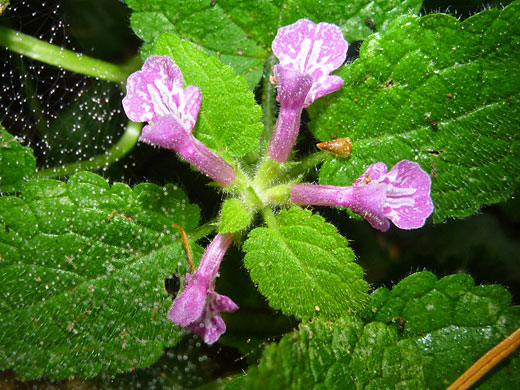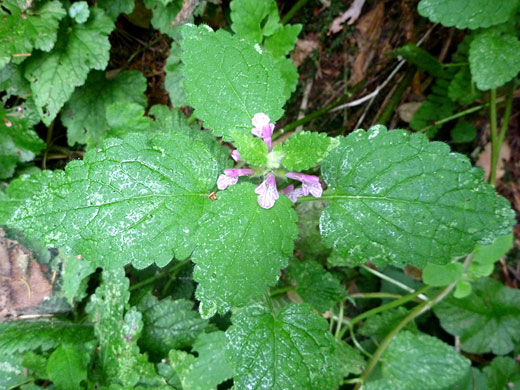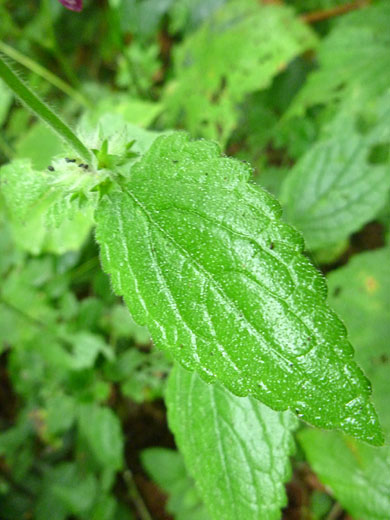Common name:
Coast hedge nettle
Family:
Scientific name:
Stachys mexicana
Main flower color:
Range:
Washington, Oregon and northwest California
Height:
Up to 4 feet
Habitat:
Shady woodland, damp hillsides, below 1,500 feet; mostly near the coast
Leaves:
Ovate, stalked, opposite, up to 5 inches long, with crenate edges
Season:
April to September
Like most hedge nettles, stachys mexicana is found in most, shaded locations, in this case along the Pacific coast from the San Francisco Bay area northwards. Plants can grow upright or form sprawling clumps, branching readily from the upper part of the main stem. Leaves and stem are hairy, sometimes glandular. Leaves are large in relation to the flowers; they have prominent veins and rounded teeth along the edges.
Flowers form small, whorled clusters from the upper leaf nodes. Calyces are covered by quite long hairs, and divided into five lobes, about half as long as the fused part of the calyx tube. The corolla has a covering of shorter hairs, and is colored pink to purple, with white patches. The lower corolla lip bends downwards, generally by less than 90 degrees, and is about equal in length (0.3 inches) to the corolla tube. Stamens are exserted.
Flowers form small, whorled clusters from the upper leaf nodes. Calyces are covered by quite long hairs, and divided into five lobes, about half as long as the fused part of the calyx tube. The corolla has a covering of shorter hairs, and is colored pink to purple, with white patches. The lower corolla lip bends downwards, generally by less than 90 degrees, and is about equal in length (0.3 inches) to the corolla tube. Stamens are exserted.
All Contents © Copyright The American Southwest | Comments and Questions | Contribute | Site Map






